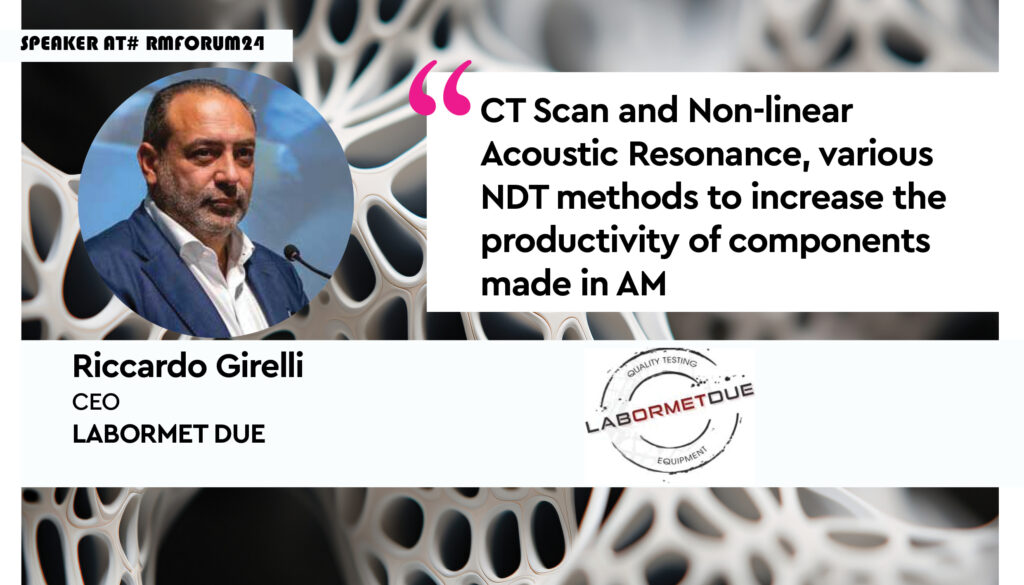
Industrial CT scan has been a widely used technology in the additive manufacturing sector for years for checking internal defects such as cracks, porosity and the presence of residual powder, as well as for geometric control of components. The undoubted advantages are accompanied by issues related to the not very short timescales for scanning and post-processing and the consequent costliness of the investigations, also due to the significant investments needed to acquire the instruments for tomographic investigations. The non-linear acoustic resonance patented by the English company Theta N.D.T. allows the creation of an acoustic imprint of the components and their analysis after an initial setting test is really quick, about a minute. The evolution of the additive world also involves reliable and fast qualification techniques, and the complementarity of the two techniques can be a solution for checking mass production. Research projects are underway with important industrial and institutional players to validate the technology that is already included in ISO/ASTM TR 52905:2024 for NDT tests on additive components made of metal.
Tomografia industriale e Risonanza Acustica non lineare, vari metodi NDT per aumentare la produttività dei componenti realizzati in A.M.
La CT scan industriale è da anni una tecnologia ampiamente utilizzata nel settore dell’additive manufacturing per il controllo dei difetti interni come cricche , porosità e presenza di polvere residua, oltre che per un controllo geometrico dei componenti. Agli indubbi pregi si affiancano i difetti legati alle tempistiche non brevissime per le scansioni e post-elaborazioni e ad una conseguente onerosità delle indagini, anche dovuta agli importanti investimenti necessari ad acquisire gli strumenti per indagini tomografiche. La risonanza acustica non lineare brevettata dalla società Inglese Theta N.D.T. permette di creare un impronta acustica dei componenti e l’analisi degli stessi dopo un primo test di settaggio è veramente rapida, circa un minuto. L’evoluzione del mondo additivo passa anche attraverso tecniche di qualifica affidabili e veloci, e la complementarietà delle due tecniche può essere una soluzione per la verifica di produzioni massive. Sono in atto progetti di ricerca con importanti player industriali e istituzionali per validare la tecnologia che è già inserita nella ISO/ASTM TR 52905:2024 per i test NDT su componenti additivi realizzati in metallo.
more info: https://www.labormetdue.it/
